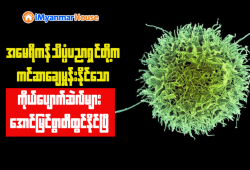
Foreign Property News | Posted by Zarni Kyaw
Scientists at Oregon Health & Science University in Portland may have just upended the future of human reproduction.
For the first time, researchers say they’ve created human eggs from skin cells—a breakthrough that raises enormous ethical, moral, and biblical concerns.

The technique could open the door for same-sex couples to have children genetically related to both partners, and could also help women unable to produce viable eggs. Lead researcher Shoukhrat Mitalipov explained, “This technology would allow many of these women to have genetically their own eggs and to have a genetically related child.”
The work is at an early stage but if scientists can perfect the process it would provide genetically related eggs for women who are infertile because of older age, illness or medical treatment. The same procedure could be used to make eggs for same-sex male couples.
“The largest group of patients who might benefit would be women of advanced maternal age,” said Prof Shoukhrat Mitalipov, who led the research at Oregon Health and Science University in Portland. “Another group are those who have been through chemotherapy because that can affect their ability to have viable eggs.”
While women are expected to be the primary beneficiaries, skin cells used to make the eggs need not come from potential mothers. “We used female skin cells in this study, but you could use skin cells from males as well,” Mitalipov told the Guardian. “You could make eggs for men, and that way, of course, this would be applicable to same-sex couples.”
The work draws on cloning pioneered in the 1990s at the Roslin Institute in Scotland. A team led by the late Ian Wilmut used somatic cell nuclear transfer to create Dolly the sheep. The process involved plucking the nucleus from an adult sheep cell and placing it into a sheep egg that had its own nucleus removed. The resulting egg was carried to term in Dolly’s surrogate mother.
The Oregon team took a similar approach by collecting skin cells from women and removing the nucleus from each. The nucleus contains the 46 chromosomes that carry the 20,000 or so genes that comprise the human genetic code. Each skin cell nucleus was placed in a healthy donor egg that had its own nucleus removed.
The major challenge the scientists faced was that healthy human eggs contain only 23 chromosomes. A further 23 arrive in the sperm on fertilisation and are needed for the fertilised egg to develop into an embryo and ultimately a baby.
Writing in Nature Communications, the Oregon team described how they overcame the problem of excess chromosomes. After fertilising the eggs with sperm, they activated them using a compound called roscovitine.
This caused the eggs to move roughly half of their chromosomes into a structure called a polar body, leaving the remaining chromosomes to pair up with those from the sperm.
In a healthy, fertilised human egg the 23 chromosomes from the mother pair up with the 23 from the father. But the Oregon team found that the chromosomes in their eggs segregated and paired up randomly. This led to early-stage embryos with the wrong number of chromosomes and the wrong chromosome pairings.
“These abnormal chromosome complements would not be expected to result in a healthy baby,” said Prof Paula Amato, a co-author of the study at Oregon. The team is working on ways to improve the process.
Ref: ‘Playing God’: Shocking Research Turns Skin Cells Into Human Eggs









